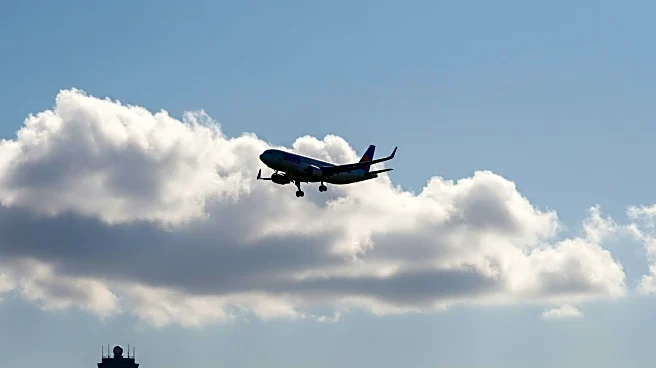Rapid Read • 7 min read
The Federal Aviation Administration (FAA) is proposing to extend flight arrival and departure rate restrictions at Newark International Airport through late 2026. This proposal follows existing limitations set to last until December 31, 2025, aimed at addressing operational challenges such as runway construction, air traffic controller shortages, and technological issues. The proposed extension would limit flights to 36 arrivals and departures per hour from January 1 to October 24, 2026, slightly increasing from the current cap but still below historical levels. The FAA's decision is driven by ongoing staffing challenges, with the Philadelphia approach, which oversees Newark, currently operating at 71.9% of its targeted staffing levels.
AD
The extension of flight restrictions at Newark Airport is significant for several reasons. It highlights the persistent staffing shortages in air traffic control, which have broader implications for airport operations and airline reliability. United Airlines, which has a major hub at Newark, stands to benefit from these restrictions as they may enhance its market dominance and pricing power. However, the limitations also underscore the neglect of the air traffic control system, affecting one of the key international airports serving the New York metropolitan area. The decision reflects a prioritization of operational reliability over maximizing flight schedules.
The FAA's proposal is likely to prompt discussions among airlines, particularly United Airlines, which may adjust its operations to align with the new restrictions. The agency will continue to address staffing challenges and evaluate long-term solutions for Newark Airport. Stakeholders, including airlines and passengers, may advocate for increased investment in air traffic control infrastructure to alleviate these issues. The proposal may also influence future policy decisions regarding airport capacity management and infrastructure funding.
AD
More Stories You Might Enjoy













